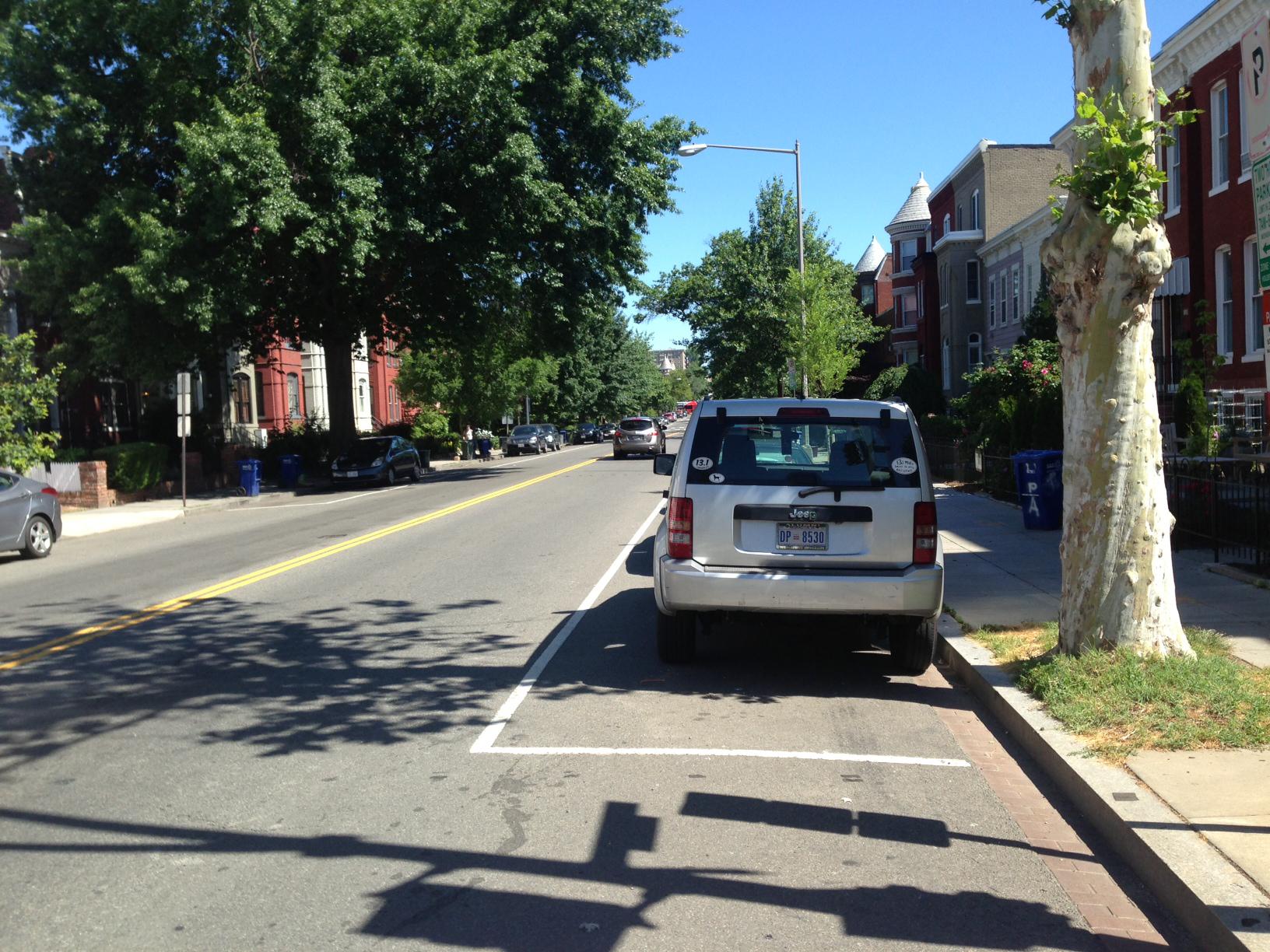The Wall Street Journal’s freakout over bicycle sharing in New York presents a good opportunity to discuss the real issue here—systematic over-allocation of public space in urban areas to cars. This, for example, is 13th Street, near my house, in Washington, D.C.
You can see that roughly twice as much space is dedicated to the movement (traffic lanes) and storage (parking lanes) of private automobiles as is dedicated to pedestrian pursuits on the sidewalk. And that’s not a particularly large street. One block over, 14th Street offers a 50 percent increase in car lane traffic offset by a tiny increase in sidewalk width and the addition of desultory bicycle lanes. In either instance, a majority of the space on the public thoroughfare is set aside for the use of cars. And even though particular interventions—a bike lane here, a storage rack there—are certainly debated, nobody even begins to address this issue from a standpoint of first principles. Why would a city like Washington (or New York), most of whose residents don’t commute to work in a car on a daily basis, want to allocate its space in that manner?
It’s not impossible to come up with an answer. Perhaps the view is that automobile driving is associated with positive social externalities such that at the margin we want to encourage people to drive more and walk less. Or perhaps the view is that the goal of urban policy is not to maxmize the welfare of city dwellers but instead to maximize the wealth of downtown landowners by facilitating suburbanites’ commutes. But there’s no explicit articulation of this view.
Instead, the idea seems to be that since private automobiles are a highly space-inefficient way of transporting people through an urban area, they therefore deserve massive subsidy in the form of additional space-allocation. After all, if private automobiles were made to get by with the same amount of space dedicated to pedestrians, they’d be impractical for many uses. But would that be a bad outcome? Why? And bad for whom?
